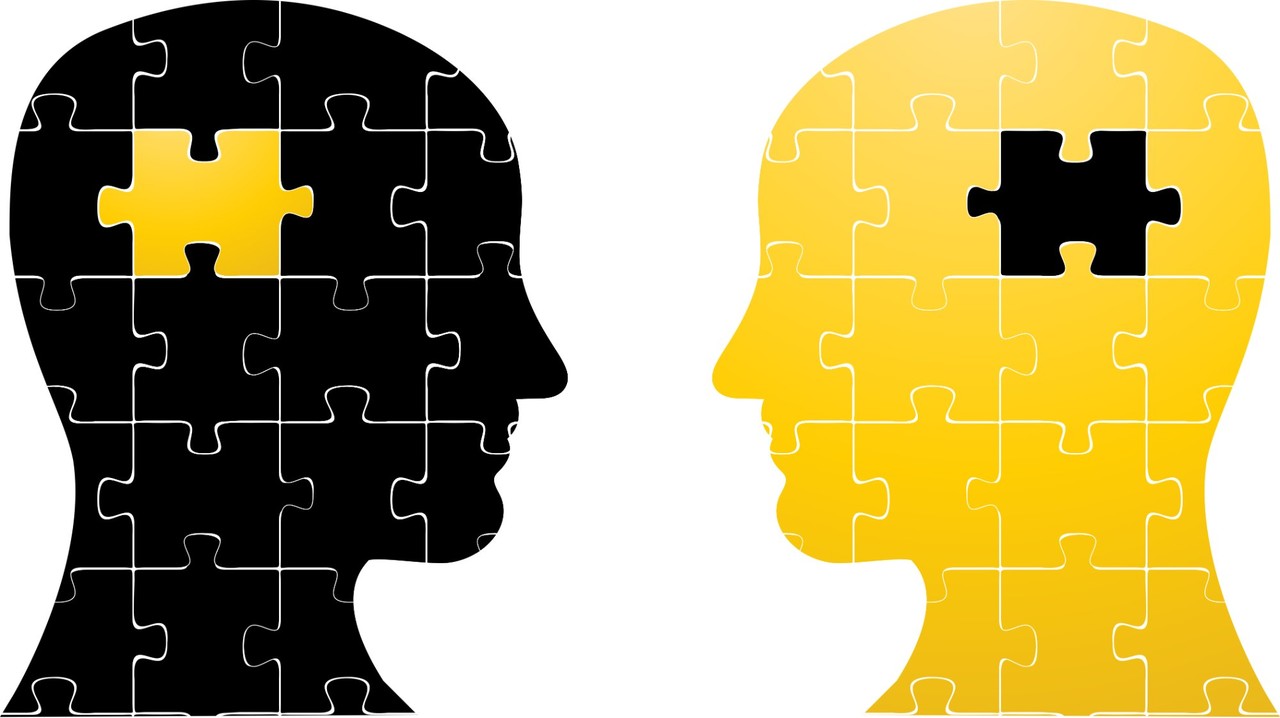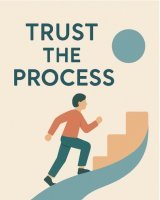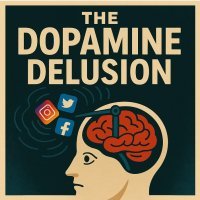The Art Of Persuasion Planning For Success
Here's How To Do It!
To be successful in the art of persuasion you must ensure that certain things happen.

The Art Of Persuasion Planning For Success - Setting The Scene
This is the third article in a series on the art of communication persuasion and change. The ideas and
material shared here are based on my past experiences in the world of corporate sales and reframed and applied them situation in everyday life, and in a non-sales environment, where you need to persuade someone to buy into your idea or proposal.
There are many different situations in everyday life where you will need to do this. Sometimes this will be at home with family members and other times will be in your working life or in the context of an organisation that you are involved with.
The art of persuasion is based on the simple idea that you get what you want by enabling the other party to get what they want.
Being a nice friendly person with good inter-personal skills may be a good start but it is not enough.
There are skills involved in the art of persuasion.
In the last article, the art of persuasion, we looked at a number of the basics involved in the communication and persuasion process – people's motivations, the use of words and in particular the importance of asking questions.
In order to build the win-win you have to uncover what it is that the other person really wants or needs, and to do that you have to ask questions - but of course your can't just launch into a conversation or discussion with someone with a list of questions and fire them off and expect answers.
There are a series of steps or phases, which make the other person feel comfortable with you so that they are engaged in the conversation and see a point and purpose to your questions.
The purpose of this process is to not only to understand what it is that the other person wants but also to build a shared perception of that need and how their buyin to your proposal will work for both of you.
In this article we are focused on how you can plan for a successful outcome.
The Art Of Persuasion Planning Process

To be successful in the art of persuasion you must ensure that certain things happen.
A Structured Approach
In order to be able to do this you
need to establish a framework of what has to happen to get you to that successful buyin to your proposal by the other person.
Whether you realise it or not you can greatly increase your chances of getting the result you seek by adopting this more structured approach.
Obviously circumstances will vary enormously.
Persuading a friend to bring their family and join with yours on an Airbnb holiday is one thing and less complex than persuading the leader of a special interest group or a public institution to commit to a programme of activity or to adopt a policy.
The process outlined here can be scaled up or simplified as the circumstances require.
The Persuasion Cycle
The key points here are to understand that:
- There is a cycle of thought processes, events and decision making that takes place - which we can think of as the persuasion cycle.
- To understand and apply the key elements of this cycle in ways that are most appropriate to the scale, complexity and significance of the buyin you are seeking.
Without a structured framework, you will find it hard to know where you are in the processs, how you are progressing, and hard to share and discuss with anyone else who may be involved with you.
After the event, having this structured approach will help you gain more insight into why you did or [more importantly] did not succeed.
Your planning of the persuasion cycle, should involve the following two activities:
[1] Defining The Key Events Of The Persuasion Cycle
- This with you identifying and mapping out the sequence of the key events that will need to happen for you to successfully achieve buyin to your proposal.
- As you do this, you may identify gaps in your current knowledge and understanding and if so, list all areas where you need more information in order for you to complete this step.
Key events are objective things that have to happen and that are:
- Tangible
- Observable
- Objectively Recognisable [by any third party observing]
Key events serve as objective milestones that help you monitor your progress toward getting your result.
- Having clarity about the specifics of the key events will stop you using guesswork and making assumptions.
- They will also show you when and where you are not making progress and that you have hit a delay or obstacle that is blocking your progress and that needs to be resolved.
[2] Determining The Decision Making Process
Throughout the persuasion cycle you need to be aware of the decision‑making processes at work that may sit behind your other party's potential buyin to your proposal.
- If the person you are seeking to persuade is within an organisation, then there will almost always be other people who will be involved in influencing the decision.
- Even in a domestic situation there may well be other people such as a partner and or other people who live with the decision maker, and these may well have direct or indirect influence over the decision maker.
- The key point here is that you need to [a] figure out who these people are, and [b] try to understand how and where they exercise their influence on the decision making process.
- The how and where will relate to the key events that you have identified.
- Depending on the circumstances and appropriateness of the situation, and where it is are crucial to the success of a key event, you may have [or seek] direct access and interaction with one of more of these people.
- If you do this, then you may need to conduct a mini persuasion exercise on them - which of course will involved you applying some or all of the steps outlined in the previous article to satisfy their needs and build a win-win with them in order to progress from one key event to the next.
The Planning Process Checklist

Make a note and record the following points:
- What is your proposal that you want to secure buyin to, and when do you want this to happen by?
- What are the high level key events that have to happen in order for you to get buyin to your proposal
- What is the sequence of these events?
- What are the things that have to dealt with to successfully move on to the next key event? [This could mean more information is required, or specific issues need to be addressed - basically anything and everything that will hold up your progress if you don't deal with it.]
- Where are there gaps in your current knowledge and understanding? List and prioritise all areas where you need more information
- Who are the decision influencers and locate them against each key event.
- What are their known or likely agendas?
- What are the major factors that may be impacting this overall situation? [e.g external factors such as the political and economic environment, or personal factors such as health, availability of funds etc.]
- What are the plus and minus factors that will affect a successful outcome?
- What are the strengths and weaknesses of your position, and your proposal?
Based on all of this write yourself a prioritised action plan.
This a true story about how I helped my daughter Tansy to secure a
$500,000 tax refund for 60 of her fellow students and herself about 5
years ago when she was undertaking her applied doctorate in Clinical
Psychology. We applied the persuasion principles outlined in the previous article in this series and specifically How To Persuade Senior People In Corporates To Do Something. Setting the scene Tansy
was in her second year of an applied doctorate in clinical psychology
and working for one of the major UK health authorities. The
way the system works in the UK is that trainee doctors of clinical
psychology work several days a week for the health authority and spend
the balance of their time at University doing the academic part of their
training. The work that
they do for the health authority is paid for by the health authority as
these trainee doctors are already highly qualified and are delivering
professional services. Tax free salaries Historically,
under a long standing Government policy of support to the medical
profession, the salaries of trainee doctors was tax free. Tax authority reverse this policy However the Inland Revenue [tax authority] had determined that these payments were no longer tax free. This was challenged and after a period of issuing confusing advice the Inland Revenue did eventually reverse this policy. Return to the status quo The
health authorities were instructed to issue full tax rebates to all
trainees who had paid this tax. On average this amounted to about the
dollar equivalent of $8,000 per trainee. Health authorities stalling on paying tax refund The
issue was that various health authorities - including the one Tansy
worked for - were delaying and stalling the issuance of these tax
refunds. After 18 months' stalling, Tansy was nominated
by her peers to act as representive of her cohort of trainees to
contact the senior management at their health authority and perusade
them to issue the tax refunds. How we applied
the "art of persuasion planning for success" principles
Tansy contacted me for advice. We applied the principles outlined in this article and starting with the checklist and this is what she noted: [1] What is your proposal that you want to secure buyin to, and when do you want this to happen by? I want to get the CEO of our health authority to commit to instructing the head of HR to get payroll to issue the tax refunds in 2 months time. I know that he is decent man and wants to see this situation resolved fairly. But he is weak and doesn't know how to. I am going to make it easy for him to do what we both want by creating the conditions that support him in delivering that outcome. [2] What are the high level key events that have to happen in order for you to get buyin to your proposal. [3] What is the sequence of these events? As set out above [4] What are the things that have to dealt with to successfully move on to the next key event?
[This could mean more information is required, or specific issues need
to be addressed - basically anything and everything that will hold up
your progress if you don't deal with it.] To find out exactly: [5] Where are there gaps in your current knowledge and understanding? [List and prioritise all areas where
you need more information.] As stated above, plus additional point 3 below: [6] Who are the decision influencers and locate
them against each key event. [7] What are their known or likely agendas? CEO is a people pleaser, well intentioned but weak and ineffective. HR is totally incompetent, seems incapable of executing anything. HP is a decent guy and runs an outsource facility handling the health authority's pay roll. His agenda is one of providing excellent service to the health authority who are a major client. [8] What are the major factors that may be impacting this overall situation?
[e.g external factors such as the political and economic environment,
or personal factors such as health, availability of funds etc.] The single biggest factor impacting this situation is corporate inertia, resulting from weak and ineffective senior management. The single biggest factor in getting or tax refunds paid will be [1] my focused campaign to create a compelling event that identifies significant exposures that the CEO has [or will very soon have] if he doesn't take action, and [2] make it so easy for them to do it and they are going to have "nowhere to hide" and no more room for any more excuses; basically I am going to shame them into taking action. [9] What are the plus and minus factors that will affect a successful outcome? The plus factors are that the facts of this issue are on our side - the tax refund has to be made as per latest tax authority ruling, plus the process of doing this seems to be simple and HP is on our side. The minus factor is corporate inertia and ineffective senior management. [10] What
are the strengths and weaknesses of your position, and your proposal? I don't see any weaknesses in our position, plus I have my Dad on my side guiding me through this! All I have to do is just do it! Tansy devised her action plan based on all the checklist information above. 6 months after she got involved with this it culminated in her sending the following letter [which we drafted together] to the CEO:
Example Of How This Planning Process Secured A $500,000 Tax Refund For 60 Doctoral Students


The outcome
Prior to this meeting with the CEO and HR she had found out from HP that all he needed was a list of the names and tax reference numbers of the trainees who were entitled to the tax refund.
Tansy got this data from her peer group of trainees in about one hour and it comprised 3 sheets of A4 paper with the details!
At the meeting with the CEO and HP she waved the 3 sheets at them and threw them onto the table and said:
"Gentlemen - this list of names is ALL that HP requires to make the tax refunds, and he has been waiting for this list for 6 months!
Shall I walk down the road to his office and give this to him or will one of you?"
Then she shut up and glared at them.
There was a pregnant pause, then HR sheepishly said:
"...let me photocopy that list..."
And the CEO said:
"...HR will you please give that list to HP this afternoon!"
The tax refunds were paid on the next payroll!
Footnote
This story is totally true. It sounds ridiculous I agree, but so often this stuff happens when you are dealing with corporates and large institutions.
These principles in "the art of persuasion planning for success" really do work.
I have used them many times and coached others to do the same.
These principles can be scaled right down and applied simply in domestic and other less complex situations.
Persuasion
[1] The Art Of Persuasion The One Fundamental Principle - Create A Win-Win
[2] The Art Of Persuasion Advanced Communication Skills - Gaining BuyIn
[3] The Art Of Persuasion Planning For Success - Here's How To Do It!
Change
Getting From A to B Is Not Aways A Straight Line
Group Culture - The Invisible Software That Rules Your Life
Change Questions To Change Your Outcomes
Communication
How To Influence without Authority - 6 Key Tips
Return from "The Art Of Persuasion Planning For Success" to:
Communication Persuasion and Change
Or to: Walking The Talk
LATEST ARTICLES
The Power Of Asking The Right Question
 The Power Of Asking The Right Question Lies In The Quest For Insight. To experience the power of asking the right question you must develop the practice of asking questions. The best way to improve th…
The Power Of Asking The Right Question Lies In The Quest For Insight. To experience the power of asking the right question you must develop the practice of asking questions. The best way to improve th…Site Pathways
 Here is a site pathway to help new readers of Zen-Tools navigate the material on this site. Each pathway is based around one of the many key themes covered on this site and contain a 150 word introduc…
Here is a site pathway to help new readers of Zen-Tools navigate the material on this site. Each pathway is based around one of the many key themes covered on this site and contain a 150 word introduc…How To Live With Contradiction - Beyond Thought Let Stillness Speak
 A major impact on so many peoples' lives is the situational contradiction of unfilled realistic expectations. So where does all this leave us? Well here we are, with mental equipment that is more lim…
A major impact on so many peoples' lives is the situational contradiction of unfilled realistic expectations. So where does all this leave us? Well here we are, with mental equipment that is more lim…How To Trust The Process Of Mindfulness - Right Now
 In mindfulness, the process isn’t some distant goal — it's what is happening right now. When we talk about how to trust the process of mindfulness the credibility of the process is heavily dependent…
In mindfulness, the process isn’t some distant goal — it's what is happening right now. When we talk about how to trust the process of mindfulness the credibility of the process is heavily dependent…Inner Mastery For Outer Impact - Mental Clarity For Effective Action
 Insights only matter if they translate into consistent action. In a world crowded with quick fixes and motivational soundbites, the theme “Inner Mastery for Outer Impact” calls us to something more e…
Insights only matter if they translate into consistent action. In a world crowded with quick fixes and motivational soundbites, the theme “Inner Mastery for Outer Impact” calls us to something more e…The Wise Advocate - Helping You Achieve The Very Best Outcome
 The focus of your attention in critical moments of choice either builds or restricts your capacity for achieving the best outcome. When we talk of 'The Wise Advocate' its easy to think of the consigl…
The focus of your attention in critical moments of choice either builds or restricts your capacity for achieving the best outcome. When we talk of 'The Wise Advocate' its easy to think of the consigl…Trust The Process - Beyond The Cliche
 The phrase "trust the process" has become a cliche, the woo-woo mantra of the "self help" industry. Those three little words feel like they ought to mean something useful but hidden behind them are a…
The phrase "trust the process" has become a cliche, the woo-woo mantra of the "self help" industry. Those three little words feel like they ought to mean something useful but hidden behind them are a…The Dopamine Delusion - Why Anticipation Beats Achievement
 The thrill we feel is not in the having, but in the wanting. The more we have, the more we want. The more things we acquire and the easier things get for us, the more discontent we feel. The more spo…
The thrill we feel is not in the having, but in the wanting. The more we have, the more we want. The more things we acquire and the easier things get for us, the more discontent we feel. The more spo…The Power Of Silence Is Experienced In Your Use Of Language
 Practise the "Beneficial Neurological Delay" for optimal comprehension. The power of silence is experienced in your use of language, specifically: - How you formulate the words you use to think and in…
Practise the "Beneficial Neurological Delay" for optimal comprehension. The power of silence is experienced in your use of language, specifically: - How you formulate the words you use to think and in…Dealing With Setbacks - 5 Questions To Help You Face Discomfort
 How To Counter The Cognitive Shock Of A Setback. Setbacks challenge your instinctual desire for control and comfort, making it unnatural to respond with calm or acceptance. The reason for these instin…
How To Counter The Cognitive Shock Of A Setback. Setbacks challenge your instinctual desire for control and comfort, making it unnatural to respond with calm or acceptance. The reason for these instin…Why Praxis Is The Key To Living A Successful And Stress Free Life
 Praxis Is The Process Of Taking Informed Action To take informed action you need to be prepared with information, knowledge, education and insight. Informed action is objective action that: - Seeks to…
Praxis Is The Process Of Taking Informed Action To take informed action you need to be prepared with information, knowledge, education and insight. Informed action is objective action that: - Seeks to…The Power Of Working With The Front Line
 How To Exercise Influence Without Authority In Complex Systems I first discovered the power of working with the frontline when I was working as a business troubleshooter on large projects, programmes…
How To Exercise Influence Without Authority In Complex Systems I first discovered the power of working with the frontline when I was working as a business troubleshooter on large projects, programmes…